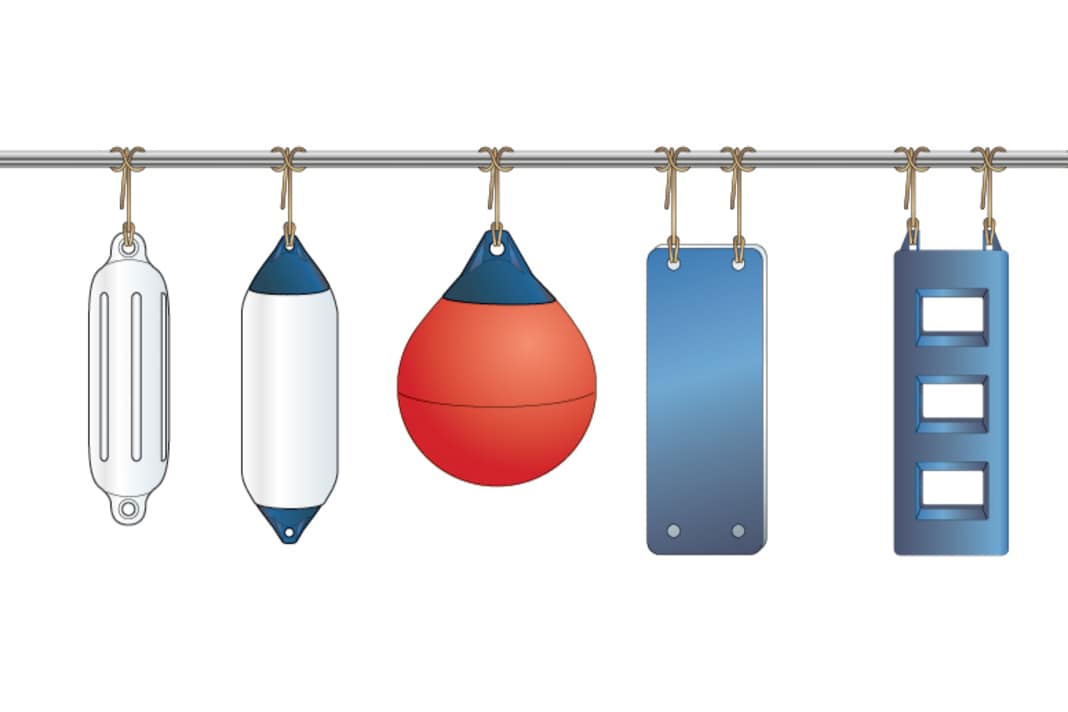





Good fenders belong to every boat like the lines or the propeller. Without them, nothing works on the jetty or quay wall. It is therefore all the more astonishing to realise that hardly anyone actually considers the form and function of their boat fenders. For many owners, fenders are merely disposable items that are often bought as bargains at boat shows and disposed of in the harbour's bulky waste container if they are leaking or too dirty. However, it is often due to incorrect use or unsuitable dimensions that fenders do not fulfil their intended purpose. We show you the 13 most common types of fenders and explain what they are designed for:
Long fender
The classic Long fender is probably the most common type. Depending on the size of the boat, it is available in all conceivable sizes from around 20 cm to 2 metres in length. It combines a good protective effect with moderate dust resistance. Equipped with longitudinal ribs or special fender covers, it reduces the risk of rubbing on the side of the boat.
Due to their narrow, cylindrical shape, however, long fenders also have disadvantages. Particularly on sheet piling, they tend to roll along the ship's side into the spaces between the sheet piling. In this case, they are of course useless. The same applies to all quay walls or jetties with large gaps. The main advantages of the long fender, however, are its shape - which can be easily stowed in forecastle boxes or special fender baskets - and its length, which eliminates the need for constant readjustment when water levels fluctuate. They are now even available as telescopic fenders that can be adjusted in length. Long fenders usually have fastening options at the top and bottom so that they can also be tied crosswise. Special versions also have a pronounced longitudinal groove with which they can be attached to handrails or railing supports, for example.
Ball fender
The second most common types are Ball fender. They are also available in various diameters from around 30 cm to 1 metre. In contrast to long fenders, they can also be used on sheet piling if they are correctly dimensioned. They also offer a better damping effect due to their significantly larger diameter. Ball fenders are also the first choice for "long-side towing". A disadvantage is their poor dustability. Spherical fenders cannot be stored in fender baskets or in back boxes to save space. They are therefore usually lashed to the deck or railing.
Cushion fender
With the Cushion fenders are plastic-covered foam panels (polyethylene). Unlike conventional fenders, they are not air-filled and are therefore significantly harder, which in turn reduces the damping effect. Depending on the design, they are available in thicknesses between 5 cm and around 10 cm. Cushion fenders can be used in a variety of ways, for example as seat pads, back cushions or buoyancy aids. Depending on the shape, they can be attached lengthways or crossways. Transversely suspended cushion fenders are well suited to sheet piling or in locks, for example. They are also easy to stow. However, they are not the right choice as the sole fender for the reasons described above.
Bow and stern fenders
Bow and stern fenders protect the particularly impact-sensitive areas of the hull. They are usually fitted with three attachment points and run underneath the rubbing strake. This ensures that they cannot slip upwards. As these fenders are used permanently, there is no need to stow them away. They are available in different shapes, sizes and colours depending on the length of the boat. They are also available in a braided version (Manila) for traditional boats. Due to the fixed mounting height, bow and stern fenders are only intended as additional protection. However, they are not suitable as a replacement for conventional fenders.
Ring fender
Ring fender are usually used on the anchor. They are intended to prevent damage to the hull caused by the anchor gear when hauling up.
Ladder or staircase fenders
Ladder or staircase fenders combine the function of a fender with that of a ladder. They can be used as surface fenders, for example on sheet piling (see also cushion fenders), or as an on-board ladder. As a ladder, they are useful wherever a low walkway makes it difficult to get on and off the boat. However, they are only suitable for use as a swimming ladder to a limited extent, as the steps do not reach under water due to their own buoyancy. Sufficient space is required for stowing them on board, which is why ladder fenders are often used on the cabin roof or on the foredeck.
Bar fender
Bar fender are particularly suitable for owners of a fixed mooring. They are usually cylindrical and have a recess for attachment to the dock. They are usually bolted firmly to the jetty. However, in harbours where this is not possible or permitted, they can also be reliably secured with lines or large cable ties. They offer good protection and can be adapted to the conditions at your own berth. For special applications, they are also available in an angled form, for example to defuse jetties or piles.
RIB fender
RIB fender were specially developed for inflatable boats. In principle, they are curved cushion fenders, although the foam material is usually thinner. Due to their semi-circular shape, they fit snugly against the support tubes and thus prevent chafing on the inflatable boat hull. Ridden on two lines, they are quickly ready for use and can be stowed easily on almost any boat to save space.
Multifender
Multifender fall into the "flat fenders" category. Their advantage is their flexible shape. This means that multifenders can also be placed around piles or particularly vulnerable parts of the hull (bow). The protective effect is mediocre, but the dust resistance is good, as multifenders can also be rolled up. In contrast to other surface fenders (cushion or ladder fenders), however, they are usually useless on sheet piling. What all air-filled fenders have in common is that they only provide optimum protection when the air pressure is correct. Fenders that are inflated too hard are just as useless as those that are under-inflated. You should always pay attention to the manufacturer's instructions and check the pressure with a pressure gauge if necessary. This applies in particular to dark fenders in direct sunlight, where overpressurisation can quickly occur. UV resistance is also important. Cheap fenders are often not sufficiently protected against sunlight and can release sticky substances when exposed to heat.
Fender baskets
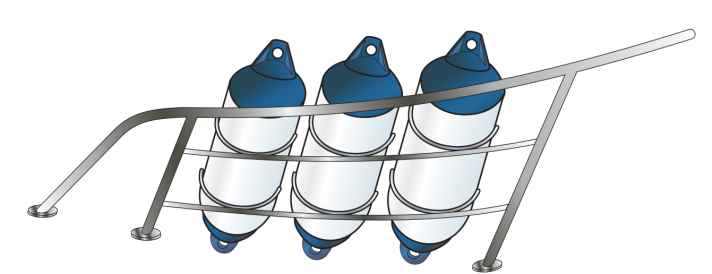
Available in different sizes for front and rear railings.
Fender board
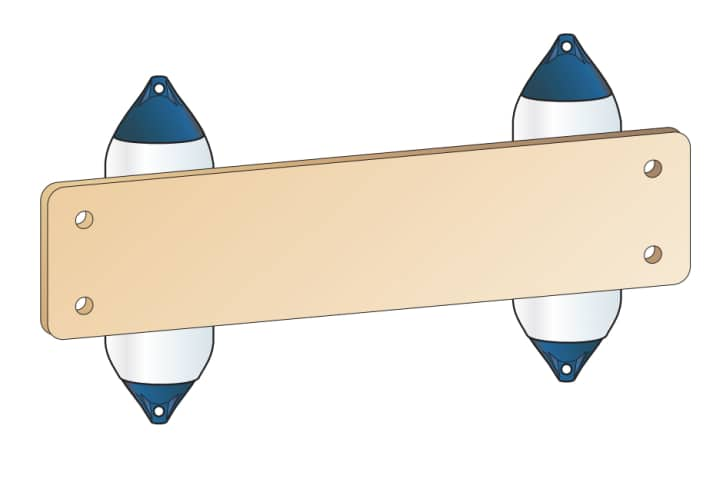
Turns two fenders into one surface fender when locking or mooring.
Clips & knots




Special moulds
Ripfender
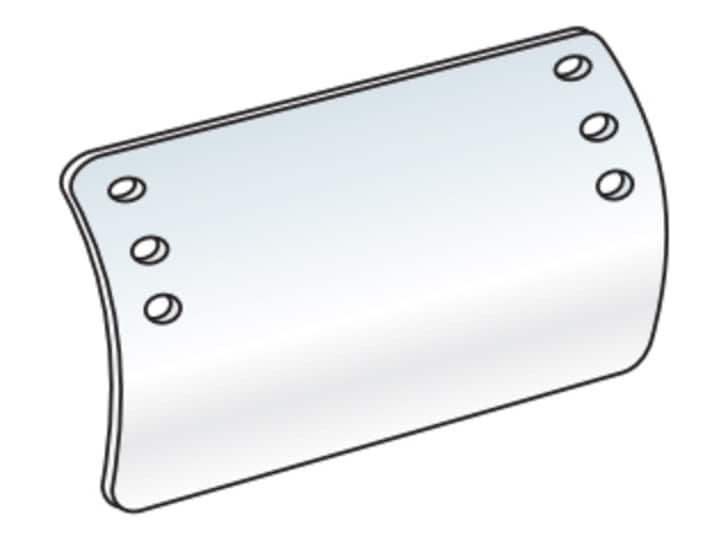
Protection for the support hose specially developed for inflatable boats.
Bar fender
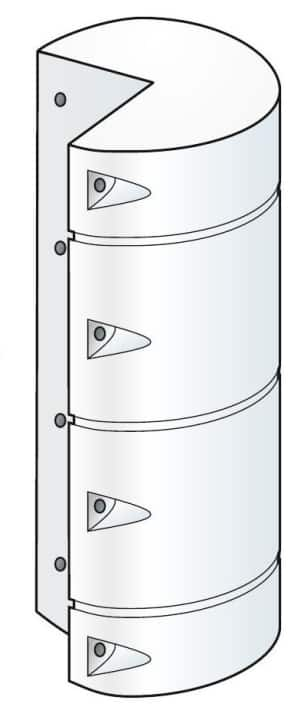
Is permanently mounted on the berth and offers good protection.
Bow fender
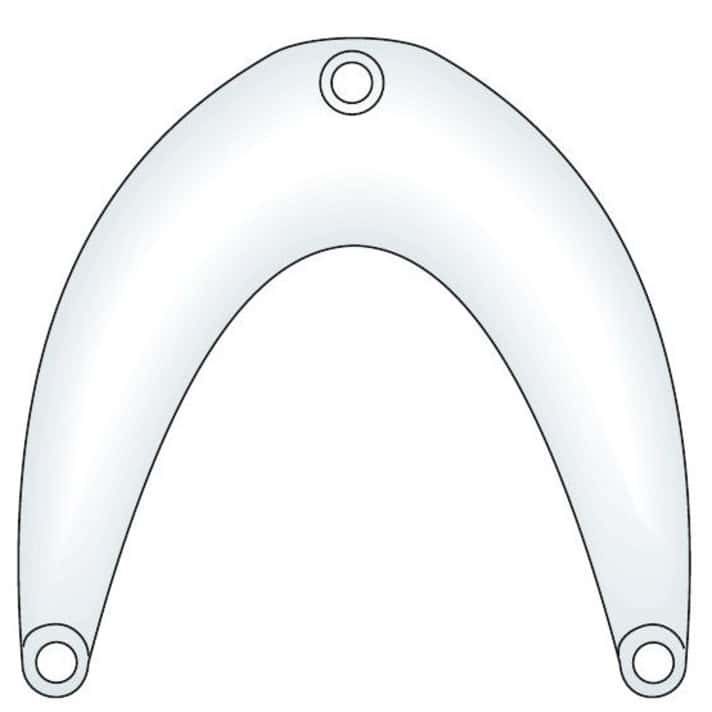
Protects the bow from rough mooring manoeuvres or other external damage.
Rest and cleansing
Squeaking fenders on the side of the boat are pretty much the most annoying thing you can imagine after a hard day's sailing. The famous "splash of washing-up liquid" on the fender side can provide a temporary remedy. Better, however, are so-called fender socks, into which the fender is inserted. Another solution is Teflon coatings (both available from accessory dealers). It is best to use special cleaners to clean fenders; stubborn dirt can be tackled with sponges. Boat wax or comparable car polishes offer protection against new soiling.

